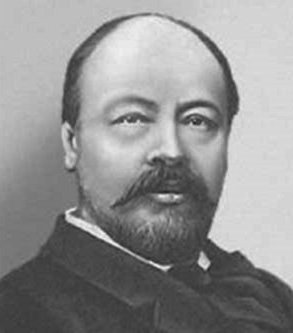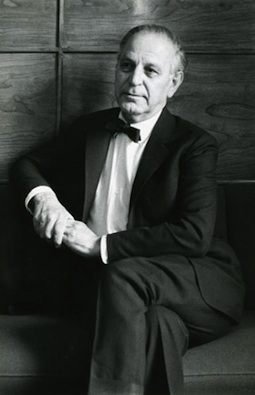
Carl Wilhelm Eugen Stenhammar was a Swedish composer, conductor and pianist.

Anatoly Konstantinovich Lyadov was a Russian composer, teacher and conductor.

Nikolai Karlovich Medtner was a Russian composer and virtuoso pianist. After a period of comparative obscurity in the 25 years immediately after his death, he is now becoming recognized as one of the most significant Russian composers for the piano.

Ulvi Cemal Erkin was a member of the pioneer group of symphonic composers in Turkey, born in the period 1904–1910, who later came to be called The Turkish Five. These composers set out the direction of music in the newly established Turkish Republic. These composers distinguished themselves with their use of Turkish folk music and modal elements in an entirely Western symphonic style.
Georgy Lvovich Catoire was a Russian composer of French heritage.
Daniel Steven Crafts is an American composer. He was born in Detroit, Michigan, but has spent most of his life in the San Francisco Bay Area.
The Symphony No. 2 in C minor, Op. 17 by Pyotr Ilyich Tchaikovsky was composed in 1872. One of Tchaikovsky's joyful compositions, it was successful right from its premiere and also won the favor of the group of nationalistic Russian composers known as "The Five", led by Mily Balakirev. Because Tchaikovsky used three Ukrainian folk songs to great effect in this symphony, it was nicknamed the "Little Russian" by Nikolay Kashkin, a friend of the composer as well as a well-known musical critic in Moscow. Ukraine was at that time frequently called "Little Russia".
Alexander Scriabin's Symphony No. 2, Op. 29, in C minor was written in 1901 and first performed in St Petersburg under Anatol Lyadov on 12 January 1902.
The Bells, Op. 35, is a choral symphony by Sergei Rachmaninoff, written in 1913 and premiered in St Petersburg on 30 November that year under the composer's baton. The words are from the poem The Bells by Edgar Allan Poe, very freely translated into Russian by the symbolist poet Konstantin Balmont. The traditional Gregorian melody Dies Irae is used frequently throughout the work. It was one of Rachmaninoff's two favorite compositions, along with his All-Night Vigil, and is considered by some to be his secular choral masterpiece. Rachmaninoff called the work both a choral symphony and (unofficially) his Third Symphony shortly after writing it; however, he would later write a purely instrumental Third Symphony at his new villa in Switzerland. Rachmaninoff dedicated The Bells to Dutch conductor Willem Mengelberg and the Concertgebouw Orchestra. The US Premiere of the work was given by Leopold Stokowski and the Philadelphia Orchestra and Chorus on 6 February 1920 and the UK Premiere by Sir Henry Wood and the Liverpool Philharmonic and Chorus on 15 March 1921.
Antonín Dvořák's Requiem in B♭ minor, Op. 89, B. 165, is a funeral Mass scored for soloists, choir and orchestra. It was composed in 1890 and performed for the first time on 9 October 1891, in Birmingham, England, with the composer conducting.

Piano Sonata No. 1 in D minor, Op. 28, is a piano sonata by Sergei Rachmaninoff, completed in 1908. It is the first of three "Dresden pieces", along with the Symphony No. 2 and part of an opera, which were composed in the quiet city of Dresden, Germany. It was originally inspired by Goethe's tragic play Faust; although Rachmaninoff abandoned the idea soon after beginning composition, traces of this influence can still be found. After numerous revisions and substantial cuts made at the advice of his colleagues, he completed it on April 11, 1908. Konstantin Igumnov gave the premiere in Moscow on October 17, 1908. It received a lukewarm response there, and remains one of the least performed of Rachmaninoff's works.

Nikolai Rimsky-Korsakov composed his Symphony No. 1 in E minor, Op. 1, between 1861 and 1865 under the guidance of Mily Balakirev. Balakirev also premiered the work at a concert of the Free Music School in December 1865. Rimsky-Korsakov revised the work in 1884.
The Symphony No. 1 in C minor, Op. 3, by Nikolai Myaskovsky was written in 1908.
William Mayer was an American composer, best known for his prize-winning opera A Death in the Family.
The Russian composer Nikolai Myaskovsky wrote his Symphony No. 11 in B-flat minor in 1931/1932.

Commemorative Cantata for the Centenary of the Birth of Pushkin, Op. 65, is a cantata by Alexander Glazunov, composed in 1899 in memory of author Alexander Pushkin. It is also known as Memorial Cantata and Cantata in Memory of Pushkin's 100th Birthday. The work in five movements on lyrics by Konstantin Romanov is scored for solo voices, choir and piano.
The Requiem is a composition for soprano, mezzo-soprano, tenor, baritone, chorus, and orchestra by the American composer John Harbison. Composed over a period of seventeen years, the complete work was finished in 2002 on a commission from the Boston Symphony Orchestra. Its world premiere was given by the soprano Christine Brewer, mezzo-soprano Margaret Lattimore, tenor Paul Groves, baritone Jonathan Lemalu the Tanglewood Festival Chorus, and the Boston Symphony Orchestra under the direction of Bernard Haitink on March 6, 2003.












